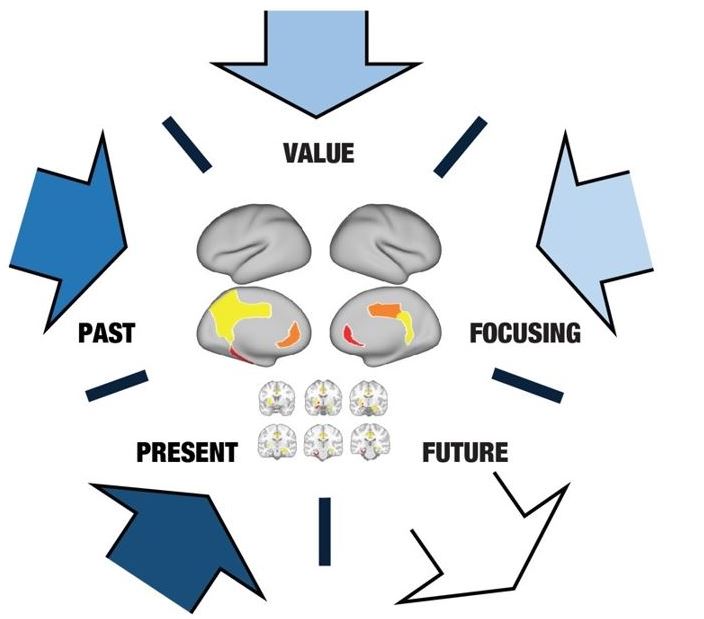How the brain orchestrates the mind much better than AI?: the topic analysed by researchers of UPF and Oxford University
How the brain orchestrates the mind much better than AI?: the topic analysed by researchers of UPF and Oxford University
In a new article published in the journal Trends in Cognitive Science researchers from Pompeu Fabra University and University of Oxford (UK) have discovered a revolutionary Thermodynamics of Mind theory for describing how the mind is organised over time. Despite being much slower than computers and AI, which requires massive energy consumption, through its hierarchical organisation the brain is able to solve deeply complex problems much better than AI.

In a new article -published in the leading international journal Trends in Cognitive Science- researchers from Pompeu Fabra University (Barcelona, Spain) and University of Oxford (UK) have discovered a revolutionary Thermodynamics of Mind theory for describing how the mind is organised over time. Drawing on the powerful physics thermodynamics theory that among others inspired Nobel Laureates such as Albert Einstein and Erwin Schrödinger, the researchers are now able to determine how even on a minimal energy budget, the brain is enabling us not only to survive, but also flourish. In fact, despite being much slower than computers and AI, which requires massive energy consumption, through its hierarchical organisation the brain is able to solve deeply complex problems much better than AI.
Crucially, the theory of thermodynamics inspired Erwin Schrödinger to write his 1944 book What Is Life?, where he proposes that sustaining life is predicated on avoiding equilibrium, and where any living organism is constantly exchanging a flux of matter and energy with its environment. According to this view, the ultimate equilibrium is death, and thus survival depends on staying as far as possible from equilibrium.
In their new theory, the authors show how the flow of energy between the brain and the environment is driving the non-equilibrium needed to sustain life
In their new theory, the authors show how the flow of energy between the brain and the environment is driving the non-equilibrium needed to sustain life. The theory draws on key ideas from physics and allows researchers to quantify and characterise the brain processing leading to non-equilibrium with a great degree of precision.
Professor Gustavo Deco of UPF says: “The beauty of thermodynamics is that the arrow of time can be elegantly mathematically described in terms of entropy production, which increases when a system goes from order to disorder, such as when a glass shatters. The total entropy production can be computed and, if this is larger than zero, a system is said to be non-reversible and in non-equilibrium. This allows us to measure how the environment is driving the brain by simply measuring the level of non-reversibility in brain signals. We have shown how the theory can capture the arrow of time and entropy production in the brain, allowing for a precise assessment of how both the external world and our body drives the brain to non-equilibrium in different situations. Potentially, this could even be used to characterise changes in equilibrium in the diseased brain before any overt symptoms have started showing.”
Dr Yonatan Sanz Perl adds “the theory also describes principles of turbulence which are important parts of thermodynamics for describing the non-linear generation of non-equilibrium brain states. This research has allowed us to move beyond merely establishing the arrow of time in non-equilibrium systems and investigate turbulent disease states such as bipolar disorder. Overall, Schrödinger’s question of what makes us survive could equally well be posed in terms of how the brain allows the optimal degree of mixing between intrinsic and extrinsic information. As it turns out, turbulence is nature’s optimal method for mixing and transmitting energy/information across time and space in the most efficient way. The novel results presented here show that the brain clearly employs turbulence in its quest to stay far from equilibrium in order to survive”.
Equally, Professor Morten L Kringelbach, states: “As such, turbulence and thermodynamic non-equilibrium are two sides of the same coin of how the brain is driven by and navigates the environment. These principles allow us not only to survive but also, from time to time, to thrive. One of our main current goals is therefore set on using this framework to discover the underlying brain mechanisms by studying brain states such as meditation, music and psychedelics that are known to evoke states of eudaimonia and flourishing.”
Reference article:
Kringelbach, M.L., Sanz Perl, Y.; Deco, G. The Thermodynamics of Mind. Trends in Cognitive Science, April 26th 2024. https://doi.org/10.1016/j.tics.2024.03.009
